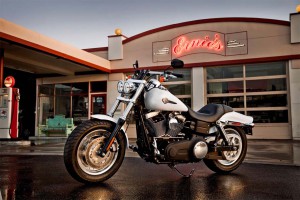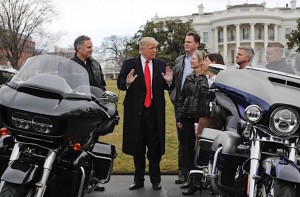
Harley-Davidson said newly implemented tariffs will increase the company's costs by $55 million this year and $100 million in 2019.
Harley-Davidson expects tariffs to drive up its costs by $45 million to $55 million this year during the ongoing conflict over global trade.
The motorcycle builder is projecting that steel and aluminum tariffs implemented by the Trump administration will add between $15 million and $20 million to its costs and European tariffs levied in response to Trump tariffs will add an additional $30 million to $35 million, CFO John Olin said during the company’s second-quarter earnings conference call. Harley-Davidson profits dropped 6% to $242 million for the second quarter
“As we move forward, we can’t eat the whole $45 to $50 million, or can’t cover it in other parts of our business and for that we are bringing down our guidance by the 50 basis points,” Olin said.
If Harley-Davidson is unable to mitigate the impact of the tariffs by 2019, Olin said the annual impact would be $90 million to $100 million, representing the majority of its profit in the EU market.
(Trump slams Harley again; claims other cycle makers coming to U.S. Click Here for the story.)

President Trump has gone from being supportive of Harley-Davidson to threatening the company with a "huge" tax.
Kristin Dziczek, vice president of the Center for Automotive Research in Ann Arbor, said in an opinion piece published in The Hill said applying a 25% tariff on all automobile and parts imports would result in 2 million fewer U.S. vehicle sales, 715,000 fewer U.S. jobs and nearly $60 billion in lower U.S. economic output.
“The policy would increase the price of the average vehicle sold in the United States an average of $4,400 (including both domestic and imported products). Prices of U.S.-built vehicles would rise an average of $2,270 due to the share of imported parts content in vehicles built in this country,” Dziczek said.
“These immediate economic outcomes run counter to the goal of promoting U.S. automotive manufacturing. The final economic impact of additional automotive and parts tariffs would likely be even worse since CAR’s estimates do not include the effects of any likely retaliatory tariffs from U.S. trading partners,” she said.
(Click Here to see how “nearly every segment of auto industry” is threatened by Trump trade tactics.)
The 25% tariff on pickup trucks will not have the same result when applied to cars. The current tariff on imported cars and parts is 2.5%, and the tariff on imported pickup trucks and cargo vehicles is 25%, she said.
“To some, the high truck tariff may seem to be a very compelling trade policy to drive more vehicle production into the United States — but the case is not generalizable,” she added.
Dziczek said new automotive assembly plant costs more than $1.5 billion, and it takes about three years from the time an investment decision is made to when the first new vehicle rolls off the line. Once built, an auto plant’s productive life is measured in decades.
(To see more about Trump’s auto tariff threat triggering backlash, Click Here.)
Automakers are understandably cautious when making large and long-lasting bets on future U.S. automotive demand. Caution is also warranted since automakers and suppliers have been able to fulfill peak U.S. light-vehicle demand with the existing production footprint, she noted.
